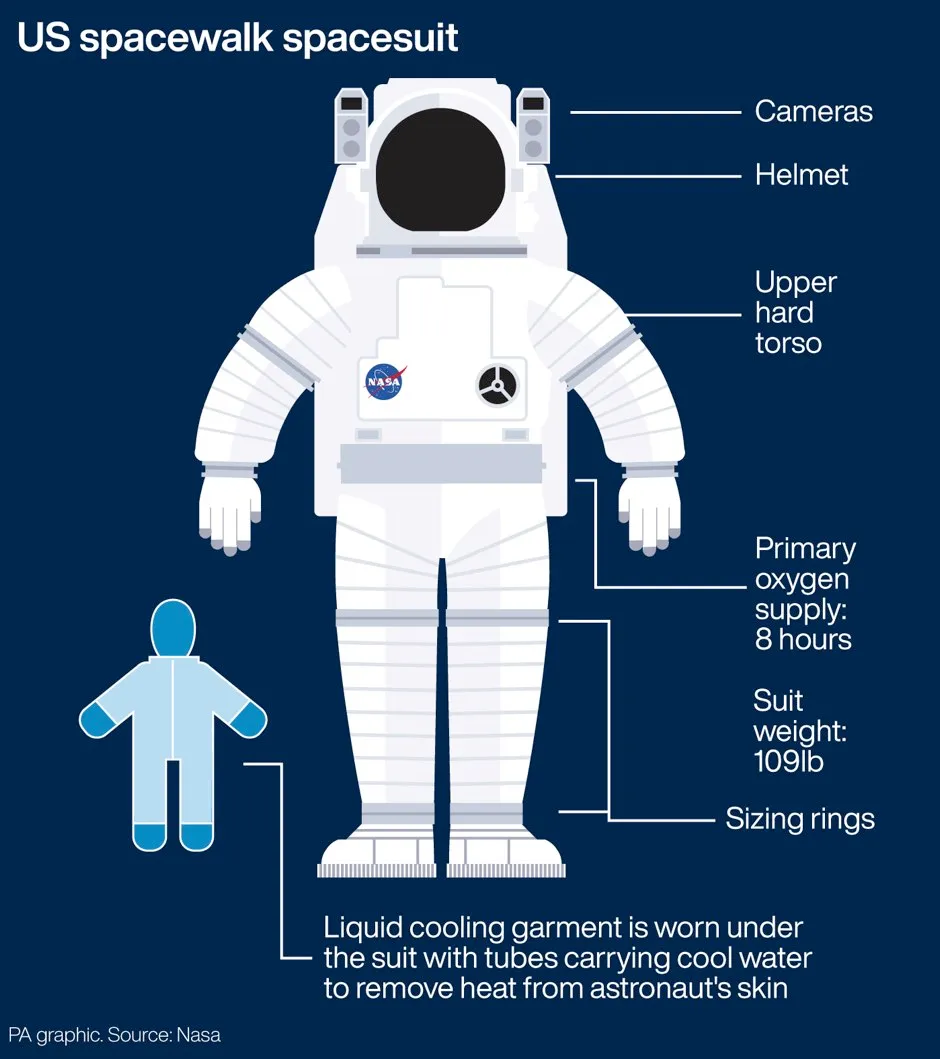NASA is gearing up for the first-ever all-female spacewalk on Friday following a power system failure at the International Space Station (ISS).
US astronauts Christina Koch and Jessica Meir are set to make history as they venture outside the orbiting space laboratory to replace a faulty power unit which stopped working over the weekend.
The mission, which will be Ms Koch’s fourth and Ms Meir’s first, is expected to last five-and-a-half hours, and will begin at 14:50 BST.
Read more about women in space:
- Wally Funk: a story of sexism in the race for space
- Ladies who launch: the women behind the Apollo Program
- New NASA spacesuit revealed in preparation for return to the Moon
The US space agency had originally planned an all-female spacewalk in March – which included Ms Koch and fellow astronaut Anne McClain – but had to cancel it because of a shortage of medium-size suits.
Ms McClain originally thought a large-size spacesuit would be fit for purpose but later concluded that a medium would be safer.

“This decision was based on my recommendation,” Ms McClain tweeted at the time from aboard the ISS.
“Leaders must make tough calls, and I am fortunate to work with a team who trusts my judgement.
“We must never accept a risk that can instead be mitigated. Safety of the crew and execution of the mission come first.”
She returned to Earth in June and NASA sent a second medium-size spacesuit up to the station earlier this month.
Spacesuits are made of many interchangeable parts – designed to accommodate astronauts with widely varying body sizes.
Body measurements of each astronaut are taken and plotted against the size ranges available for each spacesuit component. The suits are then assembled – usually four months prior to flight.
While there are no differences between a male and female spacesuit, female astronauts usually wear a smaller size.
The scheduled spacewalk will see Ms Koch and Ms Meir venture outside the ISS wearing medium-size suits to replace the faulty device, known as the battery charge-discharge unit (BCDU), which has been in operation since 2000.
Reader Q&A: What would happen if you were in space without a spacesuit?
Asked by: Peter Green, Saffron Walden
Surprisingly, you probably wouldn’t explode. Skin is almost completely gas-tight and strong enough to withstand a pressure differential of well over one atmosphere. You also wouldn’t instantly freeze. In a vacuum, the only way to lose heat is by radiation (which occurs very slowly for a relatively cool object like a human body) or by evaporation of fluid.
You would still die of course, but it would be by asphyxiation. Your blood holds enough oxygen for about 15 seconds of brain activity. After that you’d black out, with complete brain death following within three minutes.
But if you were rescued in the first 30 seconds, you’d probably have nothing worse than ‘love bite’-type bruises over all your skin. Don’t try to hold your breath before they throw you out though. The air in your lungs will cause your lung tissue to rupture quite abruptly as it expands into your chest cavity, forcing air bubbles into your bloodstream. This will be fatal even if you are subsequently rescued.
Read more:
It failed to activate after new lithium-ion batteries were installed on the space station last week.
There have been 227 spacewalkers since the first spacewalk in 1965. Only 14 women have performed spacewalks, always accompanied by men.
Ms Koch, an electrical engineer, has been living in space since March while Ms Meir, a marine biologist, joined the ISS crew in September.
Both are members of NASA's Astronaut Class of 2013.
Ms Koch is more than 200 days into her mission and is slated to set a record for the longest single spaceflight by a woman – with an expected total of 328 days in space.
Along with Ms Koch and Ms Meir, NASA astronaut Andrew Morgan, Russian cosmonauts Aleksandr Skvortsov and Oleg Skripochka, and the European Space Agency’s Luca Parmitano are part of the current ISS crew.
NASA said in a statement that the BCDU failure has not impacted station operations, safety of the crew or ongoing experiments.
“The station’s overall power supply, which is fed by four sets of batteries and solar arrays, remains sufficient for all operations,” it said.
“However, the faulty power unit does prevent a set of batteries installed earlier this month from providing increased station power.”
